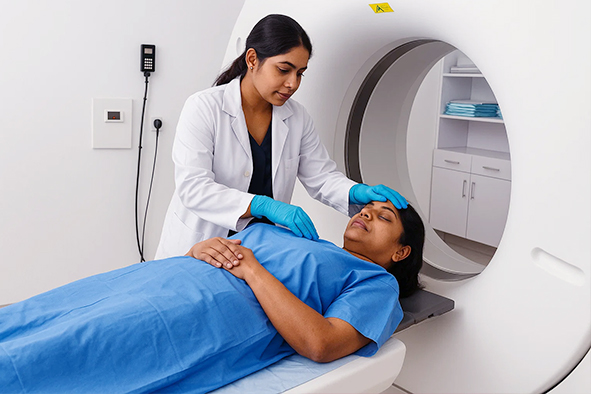What if we said that your DNA has the answer to defeating breast cancer? And it’s not in some science fiction world it’s right here. The Next-Generation Sequencing (NGS) approaches allow clinicians to customize treatments based on the individual. With NGS, we are no longer fighting cancer with generic weapons; we are decoding it and understanding it. Our era allows us to target cancer with precision.
It may sound like a film script, but unparalleled breakthroughs are happening in cancer treatment.
Table of Contents
ToggleFrom One-Size-Fits-All to Precision-Crafted Care
Breast cancer treatment in the past used to reasonably follow a pattern: surgery, chemotherapy, radiation, and repeat. However, it should be noted that cancer is not one disease but a collection of diseases; each has its unique fingerprint. The story is very different now as NGS (Next Generation Sequencing) technology is applied in breast cancer treatment. And that’s exactly where the application of NGS in breast cancer treatment is changing the game.
With NGS, doctors can sequence the entire genetic makeup of a tumor. Think of it like zooming into the cancer’s blueprint. This allows us to spot the exact mutations fueling its growth like BRCA1 or BRCA2 and design treatments tailored specifically to those changes.
No more guesswork. Just smart, science-driven choices that offer better outcomes with fewer side effects.
Decoding the Tumor: What Happens in NGS?
You might be wondering—how does this work in real life? Here’s how: a sample of your tumor tissue is taken and run through an advanced NGS machine. This tool reads the DNA sequence—like reading a book, letter by letter, but millions of pages long. It identifies any unusual “spelling mistakes” or mutations in your genes.
An NGS system finds the errors within a specific sequence, and then genetic profiling emerges. In such processes, mutations can be categorized into harmful, harmless, and actionable. To solve such cases, bioinformatics in genome analysis comes into play, analyzing massive amounts of genetic data and finding patterns using powerful software.
This engages advanced software powered by technology, creating powerful predictive models that simulate individual patient data to yield highly precise anticipated outcomes and recommendations.
Why Personalized Treatment Is the Future
What if your cancer treatment could be customized explicitly for you? This futuristic approach is already in practice with Next Generation Sequencing (NGS). Each tumor is unique in structure and metastatic potential. By learning the genetic pathways to failure, drugs can be tailored towards the blockades created by changes in the cancer cell’s DNA. For example, NGS may show mutations in civilization HER2 gene (HER2 overexpression). Therapies that directly act on the receptor will be included in the regimen.
In case of skin lesions or BRCA mutation, PARP inhibitors may act as the best treatment option. This level of personalization is increasing success rates and drastically improving the quality of life for breast cancer patients.
Keeping an Eye on What’s Next: Monitoring with NGS
Again, treatment does not end with the removal of the tumour. A major concern among cancer survivors is relapse, being diagnosed again. This, in combination, is referred to as a secondary life-threatening cancer, and NGS is also being utilized for surveillance of minimal residual disease, a term used for small, often undetectable traces of cancer that may persist in a patient’s body post-treatment.
With the recent advancements in cancer care, medicine can be changed frequently if new mutations or changes in the patient’s genome are found. This real-time genomic data analysis helps avoid the disease before it can strike back.
Think of it as a GPS tracker for cancer cells—always on the lookout, ready to alert if anything suspicious appears.
Research, Innovation, and the Smart Bombs of Tomorrow
It is often acknowledged that the advantages brought about by NGS are unequivocal. However, the possibilities concerning the future are now the more exciting part. Each new patient undergoing NGS contributes to a growing cancer-specific genetic information database, enabling knowledge sharing among researchers. As researchers access this collective data, they can identify patterns, find new types of mutations, and develop more tailored therapies. Now, we are looking at things such as light-activated “smart bombs”, which only destroy cancerous tissues and not the healthy ones.
That kind of innovation wouldn’t be possible without the backbone of genomic data analysis and the rapid advancements in bioinformatics in genome analysis.
NGS and the Human Side of Healing
Cancer isn’t just a disease of the body. It affects your emotions, your relationships, your future. Knowing that your treatment plan is tailored to your unique DNA gives you something powerful—control.
It’s not just about fighting the disease. It’s about fighting it your way with the most precise tools available.
That’s the real impact of technical advancements like NGS, powered by genetic profiling, deep genomic data analysis, and life-saving bioinformatics in genome analysis. It’s about bringing humanity back to medicine, one sequence at a time.
Final Thoughts
We’re living in a time where technology is catching up with hope. If you or someone you love is facing breast cancer, NGS could offer clarity, confidence, and control in a time that often feels chaotic.
So, ask yourself: are you exploring every option available—including advanced genomic testing? Because this isn’t just the future of cancer treatment. It’s the present—and it’s available now.




